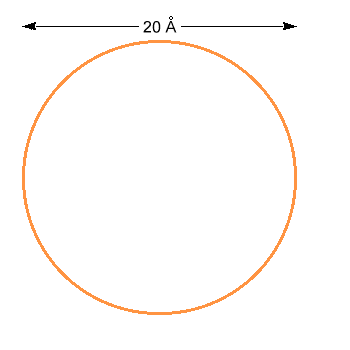Complementary Base Pairing: Space Factors
One of the most remarkable things Watson and Crick discovered in the structure of DNA is the specificity in the way bases pair across the shared axis of the double helix. A always pairs with T, G always pairs with C. Out of 6 possible combinations of 4 bases taken 2 at a time, why are these the only two that are ever seen? Two factors combine to determine this specificity, the first of which involves the available space within the DNA double helix.

 The DNA double helix has a constant 20 Å diameter. Imagine that the circle at right is the backbone of DNA and click inside to see why two combinations are not allowed.
The DNA double helix has a constant 20 Å diameter. Imagine that the circle at right is the backbone of DNA and click inside to see why two combinations are not allowed.
A does not pair with G because the two large bases are too big to fit inside the 20Å circle.
A T-C pair has plenty of room to fit into the 20Å circle, but the bases are too far apart to be stabilized by hydrogen bonds across the helical axis.
Only a pairing between a single- and a double-ringed base has the proper size to fit into the double helix.
|